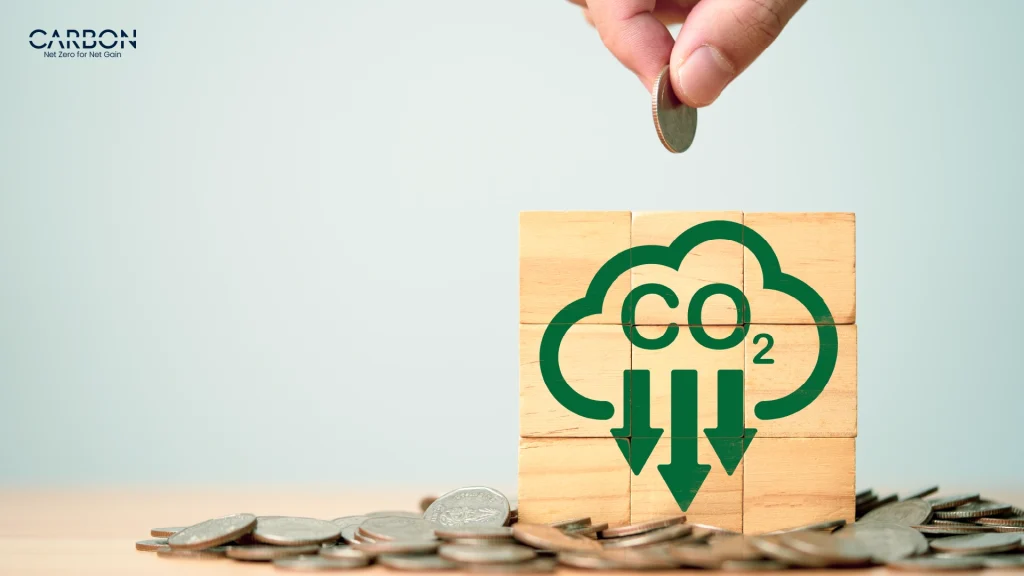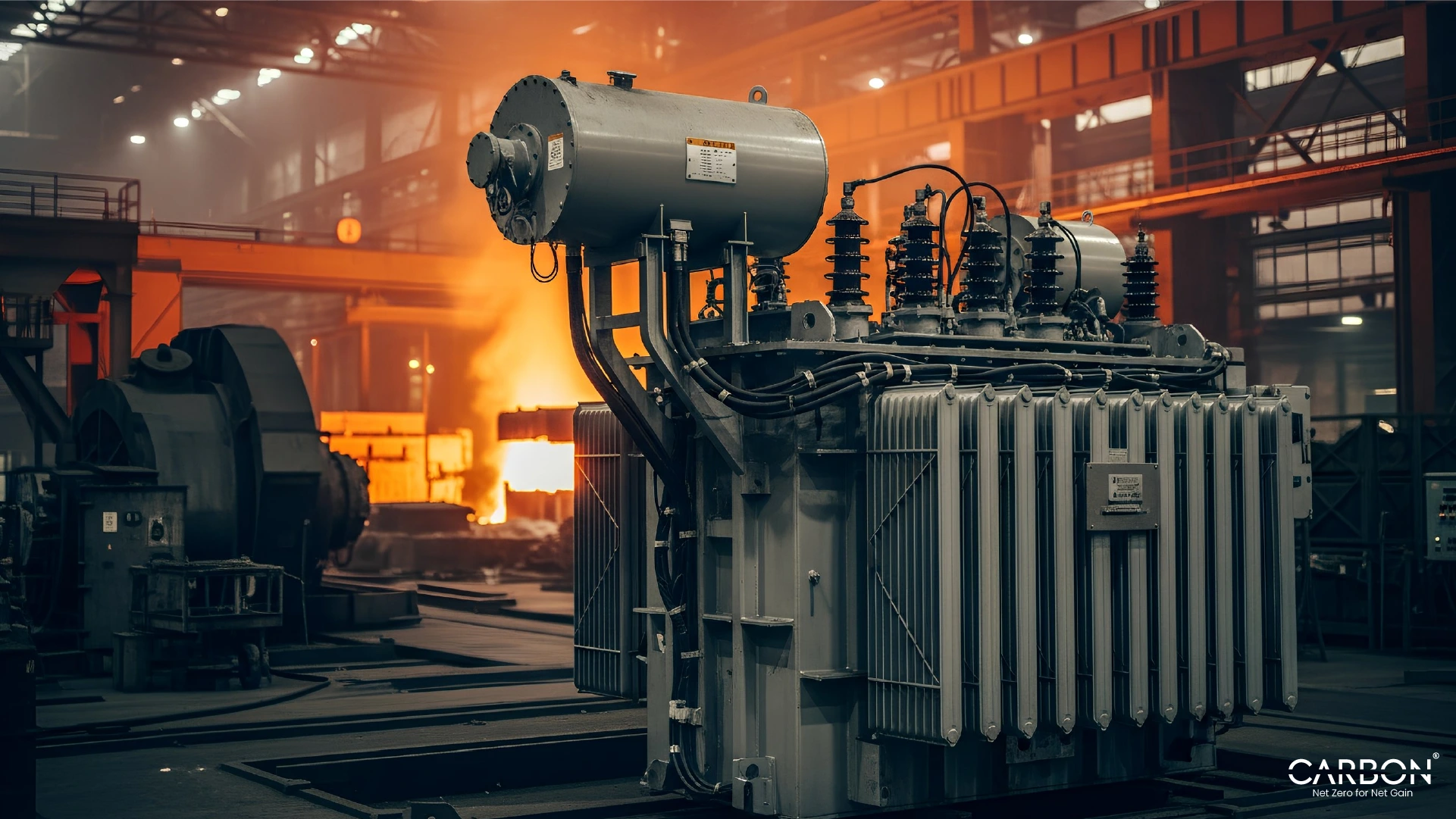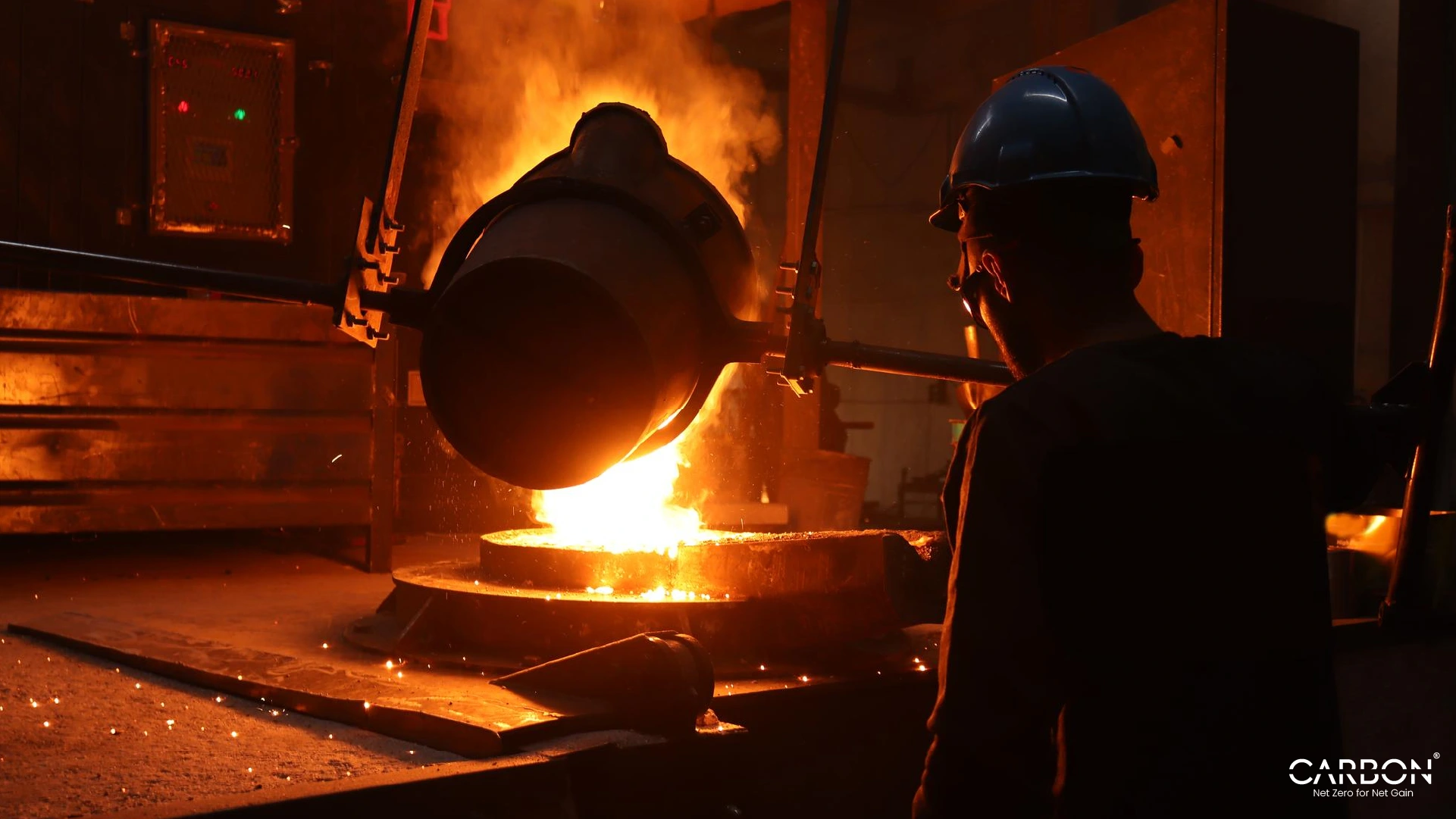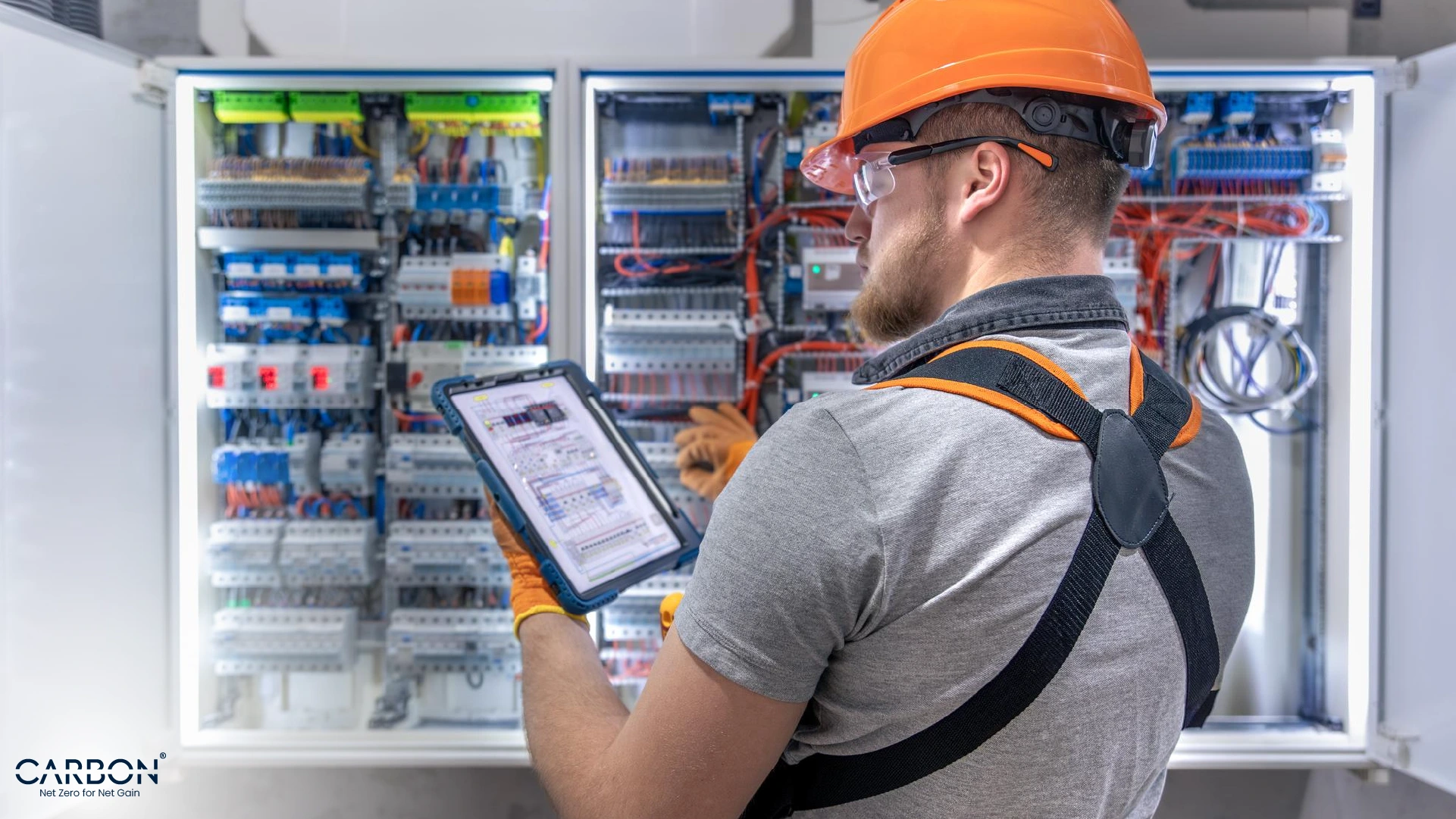Key Takeaways
- Carbon is now a verifiable, tradable asset class.
- Governments and corporates are driving credit demand.
- India’s CCTS creates direct revenue from performance.
- You need MRV infrastructure to issue high-integrity credits.
- AI + blockchain ensures trust, speed, and traceability.
- A modern platform turns compliance into profit potential.
$16.4 trillion.
That’s what analysts are projecting for the global carbon credit market by 2034. Not million. Not billion.
Trillion with a T.
This isn’t an ESG footnote or some speculative green bet. This is shaping up to be one of the largest financial markets of the next decade. Bigger than global real estate. Bigger than oil and gas.
A new economic pillar built on emissions reductions.
And here’s the kicker: most companies are still treating carbon like a liability to be minimized, not an asset to be monetized.
That mindset’s about to cost them.
The real opportunity lies with the companies that build the systems to measure, verify, and sell their emissions reductions. Because a ton of CO₂ avoided or abated is a financial product.
In this post, we’ll break down what’s fueling this carbon boom, what kind of tech stack turns data into dollars, and how your business can move from carbon compliance to carbon capital.
And if you’re wondering what that shift could be worth to you? Run the numbers. The ROI calculator lays it out, straight up.
Let’s get into it.
What’s driving the $16 trillion carbon market?
That number of $16.4 trillion sounds insane at first. But once you dig into the forces behind it, it starts to make a lot of sense.
Let’s look at the three major drivers:
1. Carbon pricing is now policy, not theory
Governments are setting targets and are putting a price on carbon.
Right now, carbon pricing covers 24% of global emissions. That includes taxes, cap-and-trade systems, and credit-based trading markets. These systems generated $104 billion in revenue just last year.
This isn’t a “what if.” It’s already in motion. And more countries are jumping in, which means demand for verifiable, tradable emissions reductions is only going up.
2. Corporates are fueling the fire
Thousands of companies from heavy industry to tech have made net zero commitments. Many are legally binding. Most have 2030 deadlines breathing down their necks.
They need high-quality carbon credits to hit their targets. Fast.
And they don’t want junk credits with vague claims. They want verified, auditable, high-integrity offsets. The supply is limited.
The demand is exploding. That’s the recipe for a high-value market.
3. India’s carbon credit trading scheme is already live
Let’s bring it home.
India’s Carbon Credit Trading Scheme (CCTS) is one of the most aggressive market mechanisms anywhere. Built on the Energy Conservation Act, it ties carbon credits directly to industrial performance.
If your company beats its emissions intensity targets, you earn tradable credits.
If you miss? You buy them. Simple.
For Indian firms, that means decarbonization is good PR and also a P&L strategy. You either leave money on the table or create new revenue. The choice is real.
How does a carbon credit become a financial asset?
Here’s where most companies get stuck.
They hear “carbon market” and think that’s great but how does a CO₂ reduction actually turn into something they can sell?
Answer: it’s not magic. It’s infrastructure. And the smartest companies are already building it.
Let’s break down the Data-to-Dollar pipeline, the tech stack that transforms operational performance into verified, monetizable carbon assets.
Step 1: Create the asset with investment-grade data
A carbon credit is a report and a financial product rolled into one. And like any tradable asset, its value depends on data quality.
You can’t generate credits from spreadsheets. You need IoT-powered monitoring to track emissions and energy use in real time, across turbines, boilers, chillers, whatever’s generating your footprint.
More than automation, it’s about precision.
Timestamped, machine-generated, third-party-verifiable precision.
That’s what gives your credit value and credibility.
Step 2: Guarantee trust with AI and blockchain
The carbon market’s had a trust problem.
Too many low-quality credits. Too little transparency. That’s changing.
Here’s how tech fixes it:
- AI audits the emissions data, verifying that reductions are real, additional, and measurable.
- Blockchain records each credit’s journey from creation to sale to retirement on an immutable ledger.
- Smart contracts automate transactions, reducing friction, cost, and the risk of manipulation.
You get faster issuance, fraud-proof tracking, and market-grade integrity.
Step 3: Trade it like an asset, not a report
Once you’ve got verified credits, they’re no longer compliance artifacts. They’re financial instruments.
That means you can:
- Sell them on voluntary markets (like Verra or Gold Standard)
- Bank them for future compliance needs
- Package them into ESG-aligned reporting or financial products
And this isn’t abstract. Run your numbers here. The calculator will show you what monetized reductions could be worth in your own operation today, not five years from now.
What should a carbon monetization platform deliver?
Let’s forget about dashboards or ESG templates for a moment. You’re trying to turn operational improvements into verified, sellable assets.
So the platform you choose has to do more than track emissions. It needs to think like a financial engine.
Here’s what matters most:
1. One seamless MRV engine
The gold standard in this space is MRV, Monitoring, Reporting, and Verification. If that process isn’t airtight, your credits don’t clear.
You need a platform that:
- Ingests real-time data from your assets
- Automates the reporting workflows
- Prepares documentation for third-party verification
- Reduces the time and cost of getting credits certified
The faster you can move from data to issuance, the faster you can monetize performance.
2. A multi-registry portfolio manager
There’s no single marketplace for carbon.
- Verra
- Gold Standard
- CORSIA
- India’s CCTS
Different registries. Different rules. Different buyers.
Your platform needs to manage them all like a carbon asset portfolio. That means:
- Tracking credits across registries
- Managing vintage and expiry
- Monitoring status (issued, sold, retired)
- Plugging into exchanges for liquidity
Think of it like Bloomberg Terminal meets sustainability data. Because that’s what this market now demands.
3. Predictive market intelligence
Selling too early? Leaves money on the table. Selling too late? Missed demand spike.
The right platform gives you:
- Carbon price trend tracking
- Sector-specific demand signals
- Alerts for premium markets (e.g., carbon removal, aviation offsets)
- Recommendations on when to trade and how to price
This turns your sustainability function into a trading desk and that’s where serious ROI lives.
From cost center to profit center
The carbon conversation has changed. Fast.
This is no longer about offsetting guilt or checking boxes. It’s about capital. Liquidity. Market share.
And the companies that treat decarbonization like a strategic asset, not just a regulatory burden, are the ones who’ll define the next decade of growth.
Carbon credits are financial products as we said. And the infrastructure you build today like IoT for measurement, AI for verification, or blockchain for trust is what positions you not to comply and compete at the same time.
At the end of the day, this is how you create more value.
Ready to monetize your carbon advantage?
Use the CarbonMinus ROI calculator to estimate how much you could save by entering your annual energy bill and industry. This is your way to unlock profits faster through energy savings.
Want to turn your sustainability program into a revenue stream? Book a strategy session and we’ll help you map the path.
Carbon is now currency. The only question is are you buying it, or selling it?
FAQs
What even makes a carbon credit valuable?
It’s not just the emission reduction. It’s the proof. A carbon credit only has value if the underlying data is rock solid that is measurable, additional, and verifiable. That means machine-logged, timestamped, third-party-certified. Think of it like a financial asset: no bank touches a loan without paperwork. Same here. If your data can’t pass the audit, your credit won’t clear.
Can I really generate carbon credits from my operations?
If you’re reducing emissions beyond what’s legally required and you can prove it, you’re in the game. Let’s say you upgrade your boilers, optimize process heat, or shift to renewables. If you’ve got the monitoring in place and the system to verify it, you’re cutting carbon while creating a sellable asset. The only catch? No spreadsheets. This takes real infrastructure.
Isn’t this just another version of greenwashing?
Not if you do it right. The old credit market was full of junk like poor data, sketchy offsets, double counting. That’s why prices tanked. But now? The market’s maturing. High-integrity credits backed by real tech, real reductions, and audit-ready verification are in massive demand. Especially from sectors that literally can’t decarbonize fast enough, like aviation and shipping. The difference is trust. And that comes down to data.
Why do I need AI or blockchain to be taken seriously in this market?
Because we’ve already hit the limits of manual. AI flags anomalies, validates baselines, and ensures the credit reflects actual change, not statistical noise. Blockchain gives every credit a unique, tamper-proof identity. It tracks the full lifecycle from creation to sale to retirement, so no one can double dip. And smart contracts? They automate trades. That’s how you scale carbon the way we scale capital.
What makes India’s CCTS such a big deal?
It’s the first time a major emerging economy has put a formal price on carbon with a trading mechanism baked in. If you outperform your emissions intensity target, you earn credits. You can sell them. If you underperform, you buy. Simple as that. For Indian industry, this flips ESG from a compliance burden to a margin opportunity. You’re no longer just avoiding fines, you’re generating revenue.
What kind of infrastructure do I actually need to participate in?
You need a platform that connects three things: operations, data assurance, and market access. That means real-time sensors (IoT), AI validation layers, blockchain for provenance, and integrations with registries like Verra, Gold Standard, and CCTS. If your system doesn’t have all three, you’re either flying blind or getting left out of the premium markets.
How do I know if this will actually pay off?
Easy. Run the ROI calculator. It pulls from your actual energy use and industry to show you how much money you could be saving in today’s market. And look, this isn’t a someday opportunity. The buyers are already out there. The market is real. The only question is whether you’re ready to play offense or stay stuck in compliance mode.




